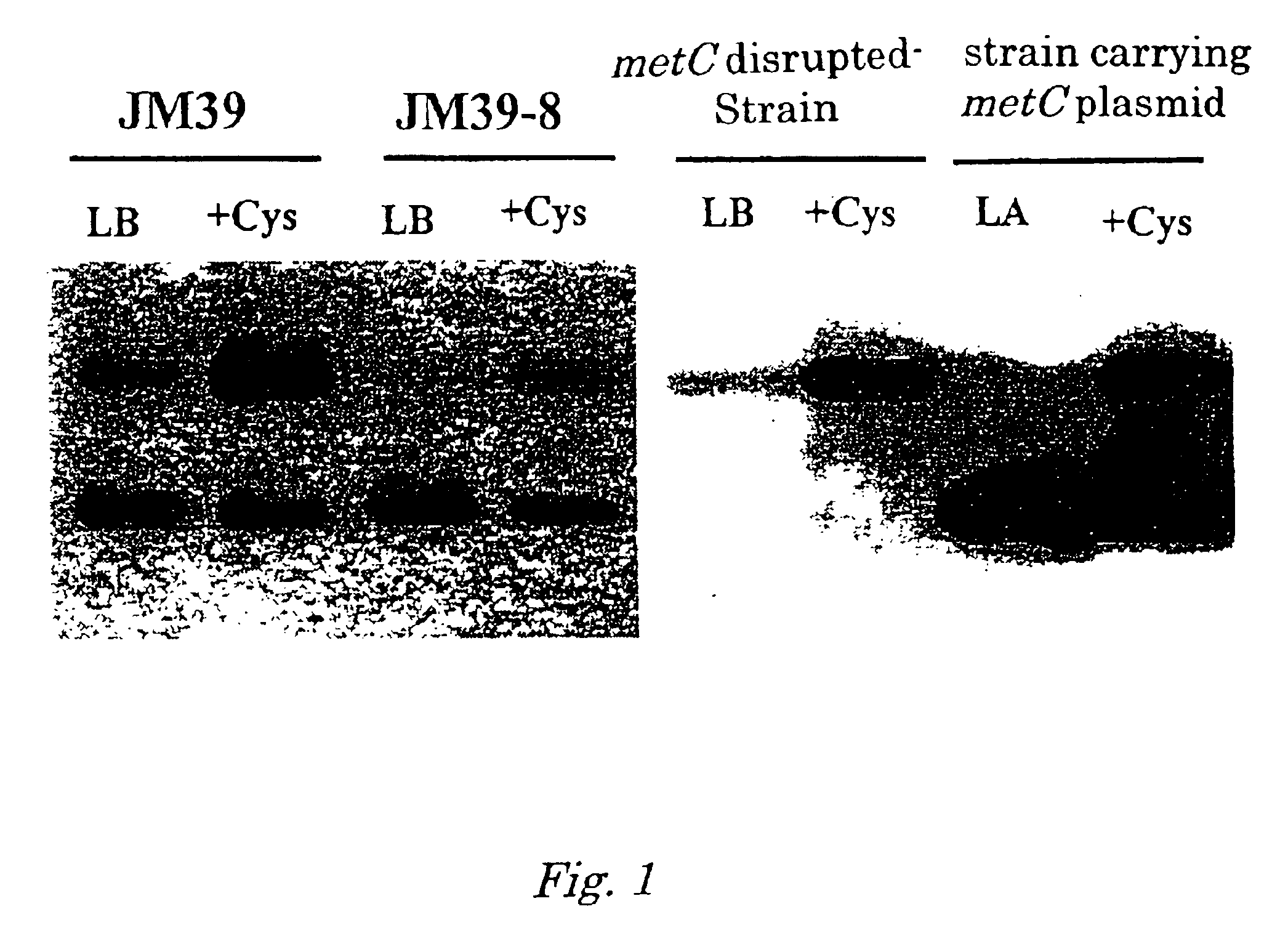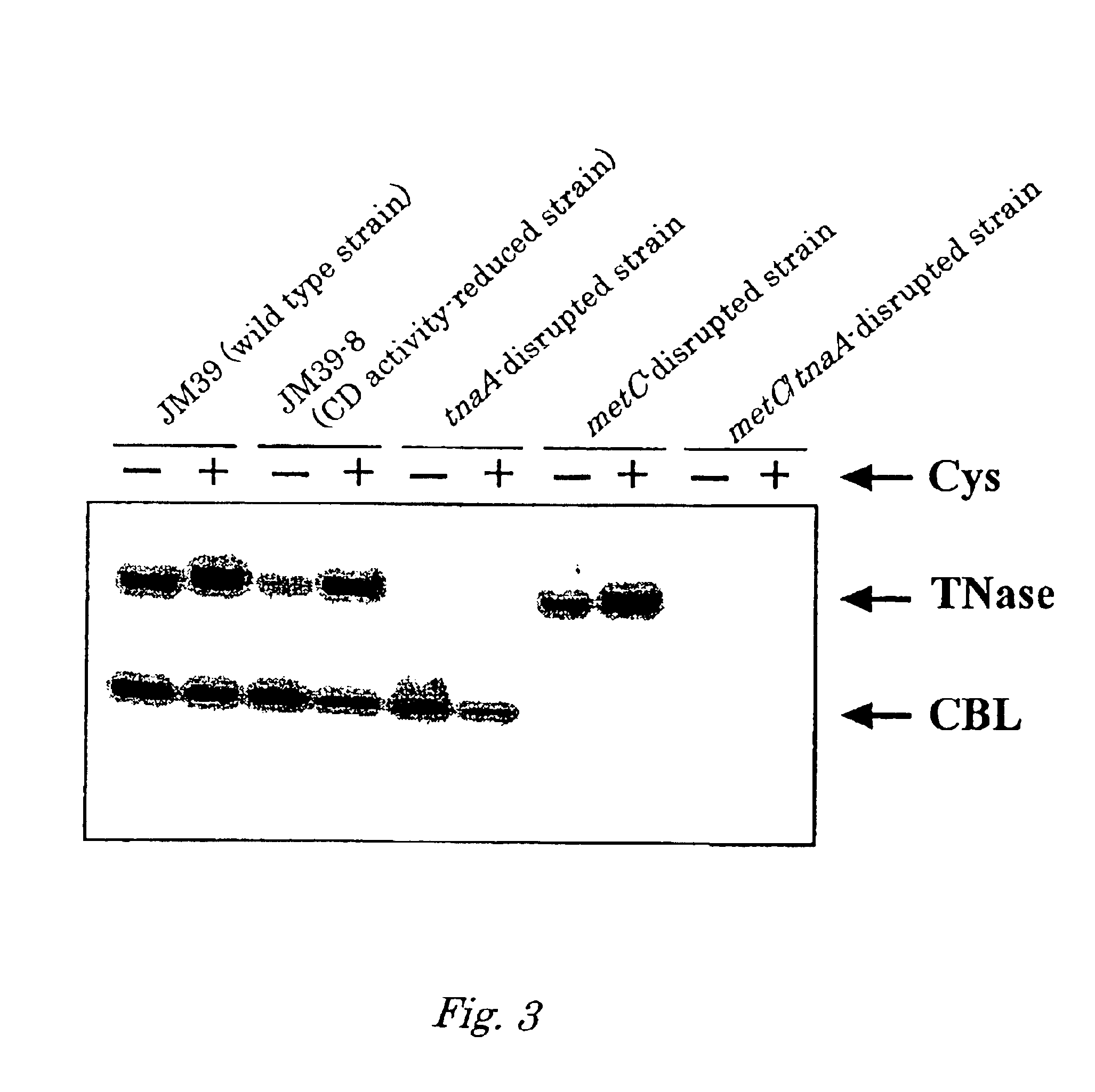L-cysteine producing bacterium and method for producing L-cysteine
a technology of l-cysteine and producing bacteria, which is applied in the direction of lyase, transferase, bacteria-based process, etc., can solve the problem that the l-cysteine decomposition system has not been studied in detail
- Summary
- Abstract
- Description
- Claims
- Application Information
AI Technical Summary
Benefits of technology
Problems solved by technology
Method used
Image
Examples
examples
[0065]Hereafter, the present invention will be explained more specifically with reference to the,following examples.
Identification of Enzyme Having CD Activity in Escherichia coli
(1) Electrophoresis and CD Activity Staining of Escherichia coli Cell Extract
[0066]Cell extracts of Escherichia coli JM39 (F+ cysE51 tfr-8, Denk, D. and Bock, A., J. Gene. Microbiol, 133, 515-525 (1987)), which is a SAT-deficient strain of Escherichia coli, and a CD activity reduced strain, JM39-8 (Japanese Patent Laid-open Publication No. 11-155571) were subjected to non-denatured polyacrylamide gel electrophoresis (Native-PAGE) and CD activity staining to analyze the entity of the CD activity. The JM39-8 strain is a mutant strain separated as an L-cysteine non-assimilating strain from cells of the JM39 strain subjected to an NTG treatment (Japanese Patent Laid-open Publication No. 11-155571).
[0067]Each strain was inoculated into LB medium (10 g / L of trypton, 5 g / L of yeast extract, 5 g / L of NaCl (pH 7.0)...
PUM
| Property | Measurement | Unit |
|---|---|---|
| Temperature | aaaaa | aaaaa |
| Fraction | aaaaa | aaaaa |
| Cell angle | aaaaa | aaaaa |
Abstract
Description
Claims
Application Information
 Login to View More
Login to View More - R&D
- Intellectual Property
- Life Sciences
- Materials
- Tech Scout
- Unparalleled Data Quality
- Higher Quality Content
- 60% Fewer Hallucinations
Browse by: Latest US Patents, China's latest patents, Technical Efficacy Thesaurus, Application Domain, Technology Topic, Popular Technical Reports.
© 2025 PatSnap. All rights reserved.Legal|Privacy policy|Modern Slavery Act Transparency Statement|Sitemap|About US| Contact US: help@patsnap.com



